-
EXECUTIVE SUMMARY
-
MARKET INTRODUCTION
-
Definition
-
Scope of the Study
- Research
- Assumptions
- Limitations
-
Objective
-
3.
-
RESEARCH METHODOLOGY
-
Overview
-
Data Mining
-
Secondary Research
-
Primary Research
- Primary
- Breakdown of Primary
-
Interviews and Information Gathering Process
-
Respondents
-
Forecasting Model
-
Market Size Estimation
- Bottom-Up Approach
- Top-Down Approach
-
3.7.
-
Data Triangulation
-
Validation
-
MARKET DYNAMICS
-
Overview
-
Drivers
-
Restraints
-
4.4.
-
Opportunities
-
MARKET FACTOR ANALYSIS
-
Value Chain Analysis
-
Porter’s Five Forces Analysis
- Bargaining Power
- Bargaining Power of Buyers
- Threat
- Threat of Substitutes
- Intensity
-
of Suppliers
-
of New Entrants
-
of Rivalry
-
COVID-19 Impact Analysis
- Market Impact
- Regional Impact
- Opportunity and Threat
-
Analysis
-
Analysis
-
GLOBAL SODIUM LACTATE MARKET, BY FORM
-
Overview
-
Powder
-
Liquid
-
GLOBAL SODIUM LACTATE MARKET,
-
BY APPLICATION
-
Overview
-
Cosmetics
-
7.3.
-
Pharmaceuticals
-
Food & Beverages
-
Others
-
GLOBAL SODIUM LACTATE MARKET, BY REGION
-
Overview
- US
- Canada
-
8.1.
-
North America
-
Europe
- Germany
- France
- UK
- Spain
- Rest of Europe
-
8.2.4.
-
Italy
-
Asia-Pacific
- China
- India
- Japan
- Australia
- Rest of Asia-Pacific
-
8.3.4.
-
South Korea
-
Rest of the World
- Middle East
- Africa
- Latin America
-
COMPETITIVE LANDSCAPE
-
9.1.
-
Overview
-
Competitive Analysis
-
Market Share Analysis
-
Major Growth Strategy in the Global Sodium Lactate Market,
-
Competitive Benchmarking
-
Leading Players in Terms of Number
-
of Developments in the Global Sodium Lactate Market,
-
Key developments
- New Product Launch/Service Deployment
- Merger & Acquisitions
- Joint Ventures
-
and Growth Strategies
-
Major Players Financial Matrix
- Sales & Operating Income,
- Major Players R&D Expenditure. 2022
-
COMPANY
-
PROFILES
-
Jungbunzlauer Suisse AG
- Company Overview
- Financial Overview
- Products Offered
- Key Developments
- SWOT Analysis
- Key
-
Strategies
-
Galactic
- Company Overview
- Financial Overview
- Products Offered
- SWOT Analysis
- Key Strategies
-
10.2.4.
-
Key Developments
-
Finetech Industry Limited
- Company Overview
- Financial Overview
- Products Offered
- SWOT Analysis
- Key Strategies
-
10.3.4.
-
Key Developments
-
Biosynth Carbosynth
- Company Overview
- Products Offered
- Key Developments
- SWOT Analysis
- Key Strategies
- Company Overview
- Financial Overview
- Products Offered
- Key Developments
- Key Strategies
-
10.4.2.
-
Financial Overview
-
10.5.
-
Finoric LLC
-
10.5.5.
-
SWOT Analysis
-
Glentham Life Sciences
- Company Overview
- Financial Overview
- Products Offered
- Key Developments
- Key Strategies
-
Ltd.
-
10.6.5.
-
SWOT Analysis
-
TNJ Chemical Industry
- Company Overview
- Financial Overview
- Products Offered
- Key Developments
- Key Strategies
-
Co. Ltd.
-
10.7.5.
-
SWOT Analysis
-
Foodchem International
- Company Overview
- Financial Overview
- Products Offered
- Key Developments
- Key Strategies
-
Corporation
-
10.8.5.
-
SWOT Analysis
-
Luoyang Longmen
- Company Overview
- Financial
- Products Offered
- Key Developments
- SWOT Analysis
- Key Strategies
- Company Overview
- Products Offered
- Key
- SWOT Analysis
- Key Strategies
-
Pharmaceutical Co. Ltd.
-
Overview
-
10.10.
-
BBCA Biochemical Co., Ltd.
-
10.10.2.
-
Financial Overview
-
Developments
-
Prathista Industries Limited
- Company Overview
- Financial Overview
- Products Offered
- Key Developments
- SWOT Analysis
-
10.11.6.
-
Key Strategies
-
Corbion N.V.
- Company Overview
- Financial Overview
- Products Offered
- Key Developments
- SWOT Analysis
-
10.12.6.
-
Key Strategies
-
Merck KGaA
- Company Overview
- Financial Overview
- Products Offered
- Key Developments
- SWOT Analysis
-
10.13.6.
-
Key Strategies
-
APPENDIX
-
References
-
11.2.
-
Related Reports
-
-
LIST OF TABLES
-
GLOBAL
-
SODIUM LACTATE MARKET, SYNOPSIS, 2025-2034
-
GLOBAL SODIUM LACTATE
-
MARKET, ESTIMATES & FORECAST, 2025-2034 (USD BILLION)
-
GLOBAL
-
SODIUM LACTATE MARKET, BY FORM, 2025-2034 (USD BILLION)
-
GLOBAL
-
SODIUM LACTATE MARKET, BY APPLICATION, 2025-2034 (USD BILLION)
-
TABLE
-
NORTH AMERICA: SODIUM LACTATE MARKET, BY FORM, 2025-2034 (USD BILLION)
-
NORTH AMERICA: SODIUM LACTATE MARKET, BY APPLICATION, 2025-2034 (USD BILLION)
-
US: SODIUM LACTATE MARKET, BY FORM, 2025-2034 (USD BILLION)
-
US: SODIUM LACTATE MARKET, BY APPLICATION, 2025-2034 (USD BILLION)
-
CANADA: SODIUM LACTATE MARKET, BY FORM, 2025-2034 (USD BILLION)
-
CANADA: SODIUM LACTATE MARKET, BY APPLICATION, 2025-2034 (USD BILLION)
-
EUROPE: SODIUM LACTATE MARKET, BY FORM, 2025-2034 (USD BILLION)
-
EUROPE: SODIUM LACTATE MARKET, BY APPLICATION, 2025-2034 (USD BILLION)
-
GERMANY: SODIUM LACTATE MARKET, BY FORM, 2025-2034 (USD BILLION)
-
GERMANY: SODIUM LACTATE MARKET, BY APPLICATION, 2025-2034 (USD BILLION)
-
FRANCE: SODIUM LACTATE MARKET, BY FORM, 2025-2034 (USD BILLION)
-
FRANCE: SODIUM LACTATE MARKET, BY APPLICATION, 2025-2034 (USD BILLION)
-
ITALY: SODIUM LACTATE MARKET, BY FORM, 2025-2034 (USD BILLION)
-
ITALY: SODIUM LACTATE MARKET, BY APPLICATION, 2025-2034 (USD BILLION)
-
SPAIN: SODIUM LACTATE MARKET, BY FORM, 2025-2034 (USD BILLION)
-
SPAIN: SODIUM LACTATE MARKET, BY APPLICATION, 2025-2034 (USD BILLION)
-
UK: SODIUM LACTATE MARKET, BY FORM, 2025-2034 (USD BILLION)
-
UK: SODIUM LACTATE MARKET, BY APPLICATION, 2025-2034 (USD BILLION)
-
REST OF EUROPE: SODIUM LACTATE MARKET, BY FORM, 2025-2034 (USD
-
BILLION)
-
REST OF EUROPE: SODIUM LACTATE MARKET, BY APPLICATION,
-
ASIA-PACIFIC: SODIUM LACTATE MARKET,
-
BY FORM, 2025-2034 (USD BILLION)
-
ASIA-PACIFIC: SODIUM LACTATE
-
MARKET, BY APPLICATION, 2025-2034 (USD BILLION)
-
JAPAN: SODIUM
-
LACTATE MARKET, BY FORM, 2025-2034 (USD BILLION)
-
JAPAN: SODIUM
-
LACTATE MARKET, BY APPLICATION, 2025-2034 (USD BILLION)
-
CHINA:
-
SODIUM LACTATE MARKET, BY FORM, 2025-2034 (USD BILLION)
-
CHINA:
-
SODIUM LACTATE MARKET, BY APPLICATION, 2025-2034 (USD BILLION)
-
TABLE
-
INDIA: SODIUM LACTATE MARKET, BY FORM, 2025-2034 (USD BILLION)
-
TABLE
-
INDIA: SODIUM LACTATE MARKET, BY APPLICATION, 2025-2034 (USD BILLION)
-
AUSTRALIA: SODIUM LACTATE MARKET, BY FORM, 2025-2034 (USD BILLION)
-
AUSTRALIA: SODIUM LACTATE MARKET, BY APPLICATION, 2025-2034 (USD
-
BILLION)
-
SOUTH KOREA: SODIUM LACTATE MARKET, BY FORM, 2025-2034
-
(USD BILLION)
-
SOUTH KOREA: SODIUM LACTATE MARKET, BY APPLICATION,
-
REST OF ASIA-PACIFIC: SODIUM LACTATE
-
MARKET, BY FORM, 2025-2034 (USD BILLION)
-
REST OF ASIA-PACIFIC:
-
SODIUM LACTATE MARKET, BY APPLICATION, 2025-2034 (USD BILLION)
-
TABLE
-
REST OF THE WORLD: SODIUM LACTATE MARKET, BY FORM, 2025-2034 (USD BILLION)
-
REST OF THE WORLD: SODIUM LACTATE MARKET, BY APPLICATION, 2025-2034
-
(USD BILLION)
-
MIDDLE EAST: SODIUM LACTATE MARKET, BY FORM, 2025-2034
-
(USD BILLION)
-
MIDDLE EAST: SODIUM LACTATE MARKET, BY APPLICATION,
-
AFRICA: SODIUM LACTATE MARKET, BY FORM,
-
AFRICA: SODIUM LACTATE MARKET, BY APPLICATION,
-
LATIN AMERICA: SODIUM LACTATE MARKET,
-
BY FORM, 2025-2034 (USD BILLION)
-
LATIN AMERICA: SODIUM LACTATE
-
MARKET, BY APPLICATION, 2025-2034 (USD BILLION)
-
LIST OF FIGURES
-
RESEARCH PROCESS
-
MARKET STRUCTURE FOR THE GLOBAL
-
SODIUM LACTATE MARKET
-
MARKET DYNAMICS FOR THE GLOBAL SODIUM
-
LACTATE MARKET
-
GLOBAL SODIUM LACTATE MARKET, SHARE (%), BY FORM,
-
GLOBAL SODIUM LACTATE MARKET, SHARE (%), BY APPLICATION,
-
GLOBAL SODIUM LACTATE MARKET, SHARE (%), BY REGION, 2022
-
NORTH AMERICA: SODIUM LACTATE MARKET, SHARE (%), BY REGION, 2022
-
EUROPE: SODIUM LACTATE MARKET, SHARE (%), BY REGION, 2022
-
ASIA-PACIFIC: SODIUM LACTATE MARKET, SHARE (%), BY REGION, 2022
-
REST OF THE WORLD: SODIUM LACTATE MARKET, SHARE (%), BY REGION, 2022
-
GLOBAL SODIUM LACTATE MARKET: COMPANY SHARE ANALYSIS, 2022 (%)
-
JUNGBUNZLAUER SUISSE AG: FINANCIAL OVERVIEW SNAPSHOT
-
JUNGBUNZLAUER SUISSE AG: SWOT ANALYSIS
-
GALACTIC:
-
FINANCIAL OVERVIEW SNAPSHOT
-
GALACTIC: SWOT ANALYSIS
-
FINETECH INDUSTRY LIMITED: FINANCIAL OVERVIEW SNAPSHOT
-
FIGURE
-
FINETECH INDUSTRY LIMITED: SWOT ANALYSIS
-
FINETECH INDUSTRY
-
LIMITED: FINANCIAL OVERVIEW SNAPSHOT
-
FINETECH INDUSTRY LIMITED:
-
SWOT ANALYSIS
-
BIOSYNTH CARBOSYNTH.: FINANCIAL OVERVIEW SNAPSHOT
-
BIOSYNTH CARBOSYNTH.: SWOT ANALYSIS
-
FINORIC
-
LLC: FINANCIAL OVERVIEW SNAPSHOT
-
FINORIC LLC: SWOT ANALYSIS
-
GLENTHAM LIFE SCIENCES LTD.: FINANCIAL OVERVIEW SNAPSHOT
-
GLENTHAM LIFE SCIENCES LTD.: SWOT ANALYSIS
-
TNJ
-
CHEMICAL INDUSTRY CO. LTD.: FINANCIAL OVERVIEW SNAPSHOT
-
TNJ
-
CHEMICAL INDUSTRY CO. LTD.: SWOT ANALYSIS
-
FOODCHEM INTERNATIONAL
-
CORPORATION: FINANCIAL OVERVIEW SNAPSHOT
-
FOODCHEM INTERNATIONAL
-
CORPORATION: SWOT ANALYSIS
-
LUOYANG LONGMEN PHARMACEUTICAL CO.
-
LTD.: FINANCIAL OVERVIEW SNAPSHOT
-
LUOYANG LONGMEN PHARMACEUTICAL
-
CO. LTD.: SWOT ANALYSIS
-
BBCA BIOCHEMICAL CO., LTD.: FINANCIAL
-
OVERVIEW SNAPSHOT
-
BBCA BIOCHEMICAL CO., LTD.: SWOT ANALYSIS
-
PRATHISTA INDUSTRIES LIMITED: FINANCIAL OVERVIEW SNAPSHOT
-
PRATHISTA INDUSTRIES LIMITED: SWOT ANALYSIS
-
CORBION
-
N.V.: FINANCIAL OVERVIEW SNAPSHOT
-
CORBION N.V.: SWOT ANALYSIS
-
MERCK KGAA: FINANCIAL OVERVIEW SNAPSHOT
-
MERCK
-
KGAA: SWOT ANALYSIS
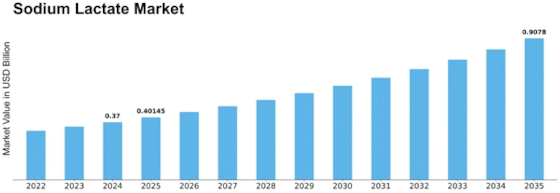

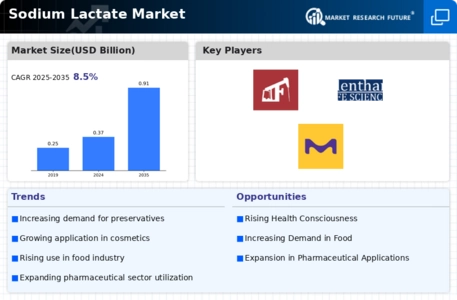


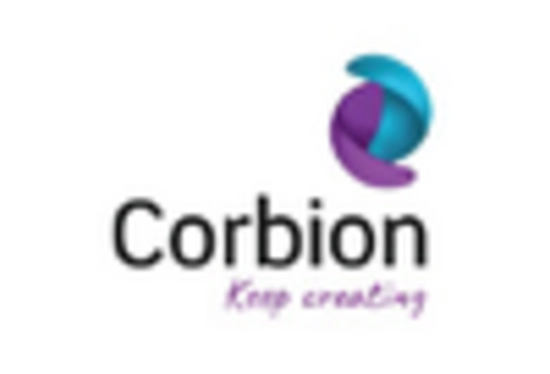
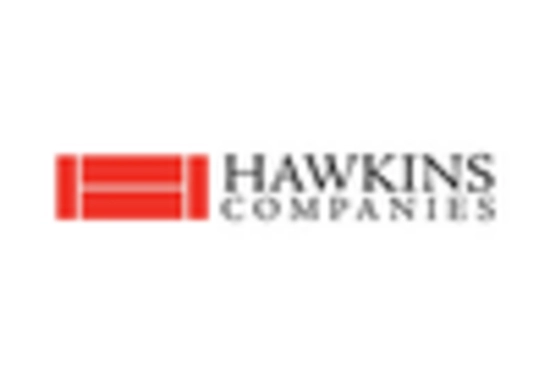
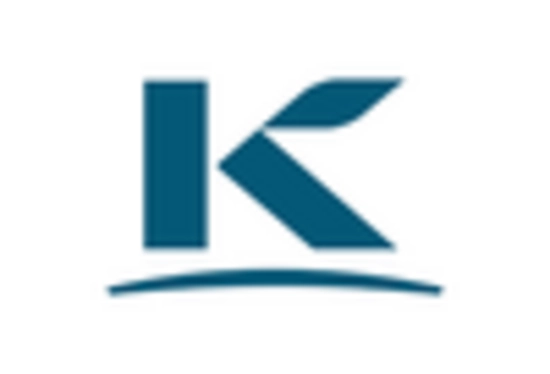


Leave a Comment